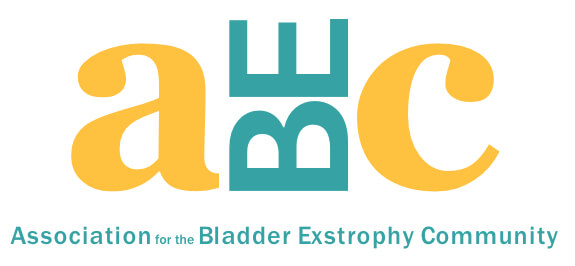Urinary continence with bladder exstrophy
Dr. Tony Khoury Chief of Pediatric Urology at both Children’s Hospital of Orange County (CHOC) Children’s Urology Center and the University of California-Irvine Medical Center, provides this helpful overview of the factors involved in urinary continence in children with bladder exstrophy.
“100 percent dryness is critical and achievable in every one of our bladder exstrophy patients.”
Notes from the video
Disclaimer: This information is provided with the goal of increasing awareness and understanding of issues related to bladder exstrophy. To the best of our knowledge it is accurate and reliable; however, A-BE-C does not assume any liability whatsoever for the accuracy and completeness of the information. Please consult with your doctor or other health professional to make sure this information is right for your child.
In order to understand urinary continence in children with bladder exstrophy it is important to first understand the components that make a child dry, the challenges faced with continence in children with bladder exstrophy and what the options are to help make your child dry.
What are the components that make a child dry?
Emptying the Bladder – A normal bladder is a container that stores urine. The bladder expands as it fills; when it’s full, nerve endings in the bladder wall send a message to the brain that you need to pee. Urination happens by relaxation – this is how we empty. We relax our pelvic floor and the bladder outlet and the urine comes out without having to strain or push
Storage of the Bladder is dependent on 3 factors –
- Size of the bladder – The size of an exstrophied bladder is usually small because it did not start as a sphere or a balloon-like structure. It started as a plate that stayed open and attached to the abdominal walls on both sides.When the bladder is closed, some of plate is used, reducing its size even more. Think of taking a flat sheet and turning it into a sphere. As a result, the overall circumference of the sphere is limited by the width of the bladder plate. On average, at birth exstrophy bladder plates are around 2 inches wide which under an inch in diameter – the size of a thimble. It could have the ability to grow with time as it’s cycled and stretched.
- Compliance of the bladder wall – The ability to increase in volume without a significant rise in pressure. Think of it an easy to balloon to inflate. During normal voiding, a coordinated series of events occurs: concurrent relaxation of the pelvic floor muscles and external sphincter and relaxation of the bladder neck, followed immediately by sustained detrusor contraction. Following voiding, the bladder pressure decreases rapidly, the pelvic floor muscles contract, and the bladder neck closes. A bladder with poor compliance has significant increases in bladder pressure with small increments in bladder volume. When the bladder is first closed care needs to be taken to ensure not too much pressure and allow the bladder to leak at low pressure and hopefully grow with the child. Sometimes the bladder leaks at such a low pressure that it doesn’t have an opportunity to hold any urine. If the bladder does not have enough resistance at the bladder neck, it will never distend resulting in a bladder that does not achieve a size large enough to hold enough urine to have social continence or the ability to 3-4 hours of dryness.
- Contractility – constantly going into spasms causing the bladder to leak. Not very common with bladder exstrophy population.
What are the challenges for Children with Bladder Exstrophy?
- Bladder Growth – When the bladder is first closed care needs to be taken to ensure not too much pressure and allow the bladder to leak at low pressure and hopefully grow with the child. Sometimes the bladder leaks at such a low pressure that it doesn’t have an opportunity to hold any urine. If the bladder does not have enough resistance at the bladder neck, it will never distend and the bladder will not grow. The challenge is that the bladder does not achieve a size large enough to hold enough urine to have social continence or the ability to 3-4 hours of dryness.
- Bladder Outlet (Sphincter or Bladder Neck) – A normal bladder outlet or sphincter is active and adaptive – meaning as the pressure increases and outlet tightens and tightens and increases the pressure. In children with exstrophy, it is not possible through surgery to achieve an outlet that is active and adaptive. When narrowing the bladder neck, the resistance becomes fixed (not able to relax) and the child has to push to expel urine. In addition, the tissues on both ends of the bladder plate are hard to work with because they are very dense and fibrous. It’s like taking a block a cement and making it pliable. As a result, it is important to get the right amount of outlet resistance that makes the child completely dry yet is able to urinate without too much straining. This is a fine balance – one of the main reasons why children cannot achieve complete dryness.
What can be done to help children become continent?
There are a couple of approaches that should be discussed with your urology care team. Each child is different and require a specialized approach with a qualified surgeon who specializes in these complex surgeries.
- Enlarge the bladder – Bladder augmentation is a surgical procedure that is performed to so that the bladder can safely store larger amounts of urine without causing high pressures or urinary leakage. A segment of your child’s intestine is removed and attached to the bladder to make the bladder larger. Because the small intestine is designed to absorb, when it comes into contact with urine it ends up absorbing some of the acids back into the circulation. This has a potential to tax the kidney.
- Re-do the bladder outlet – Sometimes the procedure to tighten the bladder needs to be done again, or occasionally, close it completely. This procedure will also require a small channel, made from your child’s appendix, that connects the bladder to the outside of the body. A catheter is used to empty urine from the bladder through the channel, and a one-way flap valve is used to maintain urine control. This is called a mitrofanoff.






Pingback: | Association for the Bladder Exstrophy Community
[…] Urinary continence with bladder exstrophy […]
Pingback: Thanks for becoming a subscriber | Association for the Bladder Exstrophy Community
[…] Urinary continence with bladder exstrophy […]